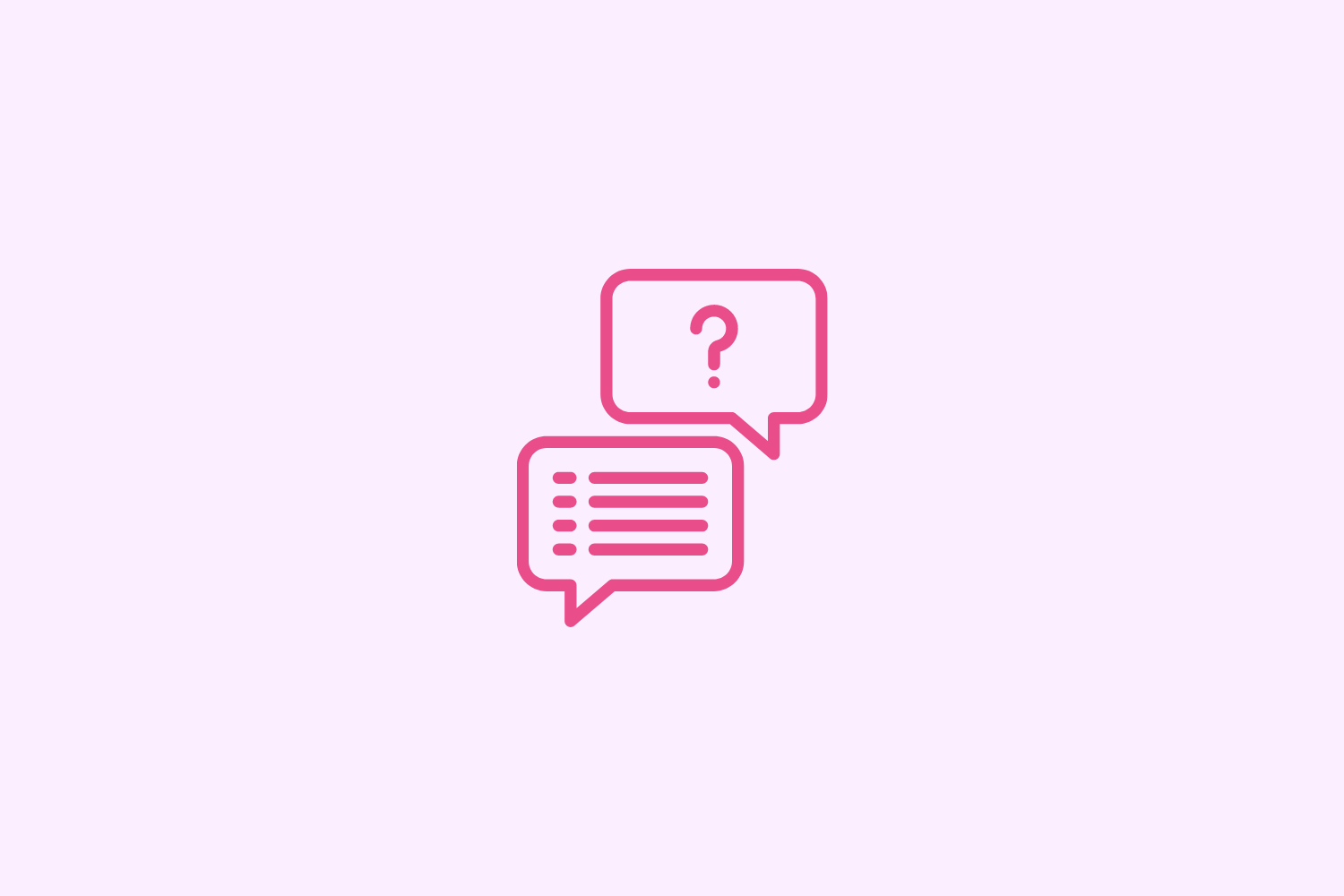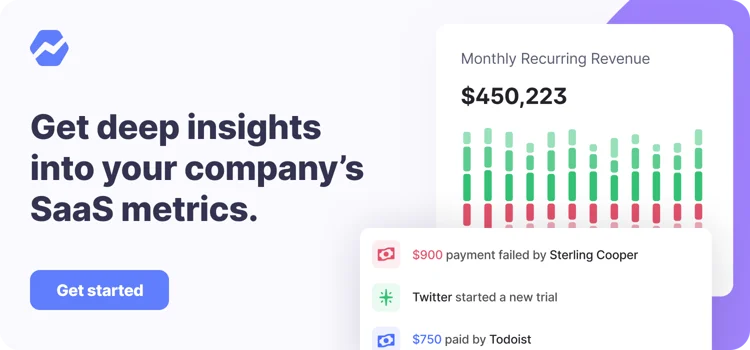Table of Contents

Many SaaS businesses concentrate on offering an amazing product and then neglect customer support. They assume that when you have a great product, customers will always come back.
This isn’t always true.
In this guide, you will learn why SaaS customer support is so important, how to get started, and what metrics to use to track success.
What is SaaS Customer Support?
SaaS customer support involves the services you offer to help your customers have a great experience while using your product. These services include answering customer inquiries, assistance during onboarding, and troubleshooting any problems the customer might encounter while using your product.
A common problem customers face when dealing with a SaaS business is credit cards failing during recurring payments. If the support team fails to deal with this issue effectively, the business might end up losing the customer and revenue.
The process of recovering failed customer payments is called dunning. Learn what an effective dunning process looks like here.
BE HONEST
How well do you know your business?
Get deep insights into churn, LTV, MRR and more to grow your business
Another issue customers might encounter while using your product are bugs. While anyone would prefer to release a product with no bugs, this rarely happens. You need an effective support team to assist customers when they encounter bugs.
The support reps also must inform the product team of bugs that customers encounter regularly so they can be fixed.
Customer support is the foundation of a successful SaaS business model. Your support agents should strive to offer prospects and clients an excellent customer experience.
Why Customer Support is Important For SaaS Businesses
Now that you understand what customer support is, let’s learn how it can help your business.
Reduce Churn
Churn is the number of customers that leave a business after making a purchase. For a SaaS business, it occurs when a customer cancels, pauses, or downgrades their subscription.
The reality is that unhappy customers are going to churn. Some reasons why a customer might be unhappy include:
- <li “=”” dir=”ltr” tve-u-177518a07e2″=””>Poor Onboarding Process
-
- <li “=”” dir=”ltr” tve-u-177518a07e2″=””>If you fail to effectively teach new customers how to make the most out of your products, they are likely to churn.
- Competitor-driven Churn
- Your customers will churn if they believe your competitors will do a better job. You need to offer great product features and excellent customer support to differentiate yourself from your rivals.
- Product Bugs
- Encountering bugs while using your product will negatively impact the user experience. For example, customers experiencing down-time.
- Payment Failure
- Over time, stored card details become outdated as cards expire, cancelled, or max out. Failed payments can lead to involuntary churn, even if the customer wishes to continue using your service.
Customer support plays a significant role in reducing customer churn. A customer is 4 times more likely to switch to a competitor if the problem they’re having is customer support rather than product or price related.
No matter how hard you try, your product is bound to have issues. Providing amazing customer support will ensure that you assist the customer when they encounter these issues.
Increase MRR
Monthly recurring revenue is the clearest indicator of the growth of a SaaS business. It offers insight into how well your software is performing financially. The sustainability of the business depends on how much revenue is received at the end of the month.
Customer support is important because it directly affects MRR. A report from Bain and Company shows that businesses can increase revenue by up to 8 percent by prioritizing offering a better customer experience.
Simply put, the most effective way to increase MRR is by retaining the customers you have. You retain the customers you have by providing exceptional customer support.
Improve CLTV
Customer lifetime value (CLTV) represents the total amount of money a customer will potentially spend on your business throughout their lifetime. It directly affects your business revenue. The higher your CLTV percentage, the more revenue you make.
So how does customer support affect CLTV?
Quality customer support is needed to retain customers. If your business offers poor customer services, your customers will port to your competitors even if your product is good. Reports show that one-third of customers will switch after one poor customer support experience.
Another 68% of your customers will leave your company if they believe you don’t care about them.
Customers want to know that if they encounter a problem while using your product, you will be there to resolve it. Resolving these problems quickly shows that they can depend on you.
If you offer a great product and customers are happy with the way you treat them, they are more likely to become long-term clients hence increasing their lifetime value.
Best Practices for Effective Customer Support
Your goal is to make the customer support experience as seamless as possible. Here are 4 key ways to do this:
1. Make it Easy to Get in Touch
Display Contact Info Prominently
Your contact information must be clearly stated on your website. Place it in prominent areas on your website like your sidebar, headers, footer section, and after blog posts.
You should also have a dedicated “Contact Us” page that shows your phone number, email address, and social media handle.
Offer Different Channels for Support
Not all customers will want to use email or live chat support. Some might prefer to speak to a customer rep directly. The customer rep must be professional and knowledgeable. According to Marketing Land, 74 percent of customers are likely to go with a competitor due to poor customer support over the phone.
Using a CRM system will help centralize and organize your customer communication process. It allows you to track interactions with customers and share data in real-time with team members.
CRMs also automate data-entry to provide a clear and complete picture of customer interactions. You will be able to save all email exchanges, live chat messages, or customer support requests that involve each customer.
Tip: Your customers expect you to be active on social media. Using social media allows you to efficiently reach a much wider group of customers than using traditional methods like email and phone. Thanks to social media, customers often feel “closer” to the brands they work with.
Consider Adding a Live Chat Option
Live chat makes it easy for customers to contact support agents with just the click of a button.
It is one of the most effective customer support systems because customers receive a response to their queries in real-time, unlike email that might take hours or days. Live chat is also great for addressing any pre-sale concerns the customer might have.
Some recommended live chat companies include Help Scout, MobileMonkey, and Olark.
Create a FAQ page for self-service
When encountering software problems, many customers head directly to the FAQs page. Reports from SuperOffice show that 40% of consumers prefer self-service over human contact.
You need to create in-depth knowledge bases or FAQ pages that address common queries your customer will have.
2. Identify The Areas Your Customers Face Issues and Fix Them
Being proactive can save your support agents a lot of stress. It also improves the customer experience significantly.
Some of the common customer support issues that SaaS customers face are:
- Bugs
- Missing or confusing features
- Failed payments
Software is bound to break down at one point or the other. For example, a software update can create bugs or missing features. You must test for bugs regularly so that you can discover them before the customer does.
Failed payments are another issue that SaaS businesses face. This can be very frustrating to customers and cause them to abandon their subscriptions.
Concerned about losing revenue due to failed payments? Recover by Baremetrics helps SaaS businesses significantly reduce failed payments and combat churn, ultimately putting some money back in your pocket.
3. Structure Your Customer Support Staff For Reliability and Efficiency
Your support team serves as the first touch-point with the customer after a sale. Lacking an efficient support staff can be detrimental to your SaaS company.
Invest in training programs for your customer supporting staff. They should have in-depth knowledge of your software and the services you offer.
Along with having technical skills, they should also have great soft skills like empathy and communication.
4. Know Your Customers
Great customer support begins with knowing who you are serving.
Personalization is key to making customers feel valued, and ensuring support experiences feel positive. With the right software, this can be done easily at scale.
Baremetrics comes with a People Insights feature that allows you to create detailed customer profiles segmented however you like. Try it for free to elevate your business’s customer support.
How to Measure the Success of Your Customer Support System
How should you determine the success of your customer systems?
These metrics will help you get started:
Customer Satisfaction Score (CSAT)
A customer satisfaction score is an indication of how satisfied your customers are with your support.
You can identify this by running a satisfaction survey. Customers will rate their experience using a predefined scale. For example 1-3 means they are not happy with your support, 4-6 means your support is manageable, 7-10 means your support is excellent.
To ensure that customers participate in the survey, make it short.
Customer Retention Rate (CRR)
Customer retention rate is the percentage of customers that are retained in a company after a given period. They are several factors that affect customer retention with customer support being one of them. Offering exceptional customer services directly affects your retention rate. Learn how to calculate customer retention rates.
Customer Churn
Customer churn is the opposite of customer retention. It can also be called customer attrition. It is the number of customers you lost in a given period.
Poor customer support can cause customers to move to your competitors (as explained earlier in this guide). An experienced and effective support team can help reduce churn. Learn more about customer churn and how to calculate it here.
Total Number of Customer Support Tickets
Tracking the total number of customer support tickets will help you quickly identify when things go wrong.
An increase in support tickets might be due to a bug after a software update or website issues. You must keep track of how this number changes so you can mitigate issues before they get too serious.
Are Your Customers Happy With Your Customer Support System?
This is an important question SaaS businesses must address.
Building an efficient and reliable customer support system will help you increase retention and reduce churn rate.



